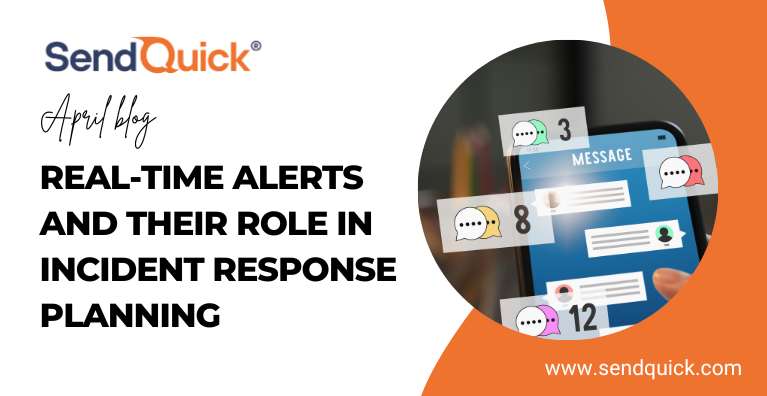According to a Clark School study at the University of Maryland, every 39 seconds, a cyberattack occurs somewhere on the Web. This means an organisation’s systems suffer an attack dozens of times while its IT support team is on a quick break. As such, it is crucial to have a robust alert management platform that ensures critical alerts are received no second later.
Otherwise, delayed alerts also mean a delayed response, giving attackers more time and opportunities to wreak havoc or steal confidential data. To avoid this issue, IT security teams now leverage live event notifications or real-time alerts in their incident response plan (IRP). Read on to understand what these alerts entail and their role in an organisation’s IRP.
A Quick Overview of Real-Time Alerts
Real-time alerts are alerts scheduled to continuously search for events in real-time, triggering alert actions either when results meet user-established parameters within a rolling time window or on a per-result basis. An example of the former is when a user experiences numerous failed login attempts within a short period, which notifies an admin in real time.
Real-time alerts are also not duplicated, meaning that if a particular non-actionable log message has already triggered an alert once, it will not trigger a second one should the same message be generated. For example, Message A triggers an alert sent at Time Z. The alerting system then detects Message A again at Time Z+1, but it will not make a second alert. However, if a different message pops up on Time Z+1, a new alert is sent due to the different root cause.
These alerts are ideally sent to a wide range of devices and channels, such as workstations and mobile devices, SMS or email, to ensure there is only a slim chance that users ignore or miss them. Using multiple channels allows for redundancy that lets alerts be delivered through email, phone calls, or SMS broadcast should the primary method be unavailable. In the off-chance that an alert is missed, there should be an escalation policy that will repeatedly relay the Alert-Until-Read live event notification to another team member until it is addressed.
Incorporating Real-Time Alerts Into IRP
Organisations can reap the greatest benefit and make the most out of real-time alerts by embedding them into their incident response planning.
Preparation
In this phase, identify which alerting systems are currently deployed and their capabilities. Suppose they can only send alerts to a central console. In that case, it is best to integrate a universal notification tool with it or adopt an improved alerting management platform that already has it. This is because universal and omnichannel notifications ensure real-time alerts are received regardless of where your team is and which messaging apps, collaboration tools, and devices they use.
Upon knowing how alerts are sent, the next step is finalising the details around which events your support team should get alerts for, their priority, and how they are received. This is one of many steps in ensuring alert quality in an alerting system that allows for quick incident response and prevents getting desensitised by meaningless alerts.
For instance, critical incidents should trigger alerts in multiple modes, such as email, SMS, persistent desktop notifications, and so on, paired with a fallback system to relay the alert to the next person should the primary responder be unavailable.
Detection and Analysis
The alerts get triggered and sent in the detection phase. They should contain actionable information about the event that caused it, such as the origin, specific time, location, etc. These alerts should also be logged as data like alert acknowledgement and user response time can be reviewed in the IRP’s refinement stage.
Containment, Eradication, and Recovery
In the first two phases, real-time alerts keep support teams, stakeholders, and employees updated on the ongoing event response. The notifications enable these parties to react appropriately to current events, like anticipated downtime and allow information to be dispensed in an automated and uniform manner.
After recovering from the incident, organisations can use real-time alerts to notify stakeholders and other relevant parties about the successful response. Alerts can also inform everyone about updated policies and requirements, such as immediate changes in their passwords.
Refinement
During the refinement phase, use the data collected from the logs to further improve the incident response plan. For example, if notifications went unanswered by the primary recipient, changes to the mode of the alert or the recipient may be necessary. If notifications do not trigger when expected, the notification policies should be reviewed. Simply put, it is vital to ensure that alerts are tied to the right events.
Conclusion
Real time alerting is an essential tool that can keep organisations one step away from disaster. With that said, making sure they do not overwhelm your support teams is the biggest challenge to overcome, given the numerous events taking place in large-scale IT infrastructures at all times. Thus, it is vital to choose key events that can trigger real time alerting and address them in the right way to the right people, which also helps prevent alert fatigue and enables a speedy response.
For reliable real time alerting that keep your systems from failing, check out SendQuick’s IT alert and notification solutions today. We go beyond just a local SMS gateway provider and offer comprehensive omnichannel IT alert management platforms that centralise alerts from your IT systems with multiple integration methods, sending instant notifications to the right people via SMS, email, voice, and many more. To learn more about our IT alert management and other products, including SMS broadcast, messaging portals and APIs, and cloud SMS, visit our solutions page or contact us to speak with a SendQuick expert.






